genealogies
-

Knight of the Swan
Godfrey of Bouillon, leader of the Princes’ Crusade, along with his brothers, Baldwin of Jerusalem and Eustace III of Bologne, were the supposed sons of the Knight of the Swan, celebrated in Wagner’s opera of the grail story Lohengrin, a heritage that was later claimed by the houses of Hesse, Oldenburg and Cleves.
-

Guillame of Gellone
As popularized in The Holy Blood Holy Grail, which was the basis of Dan Brown’s Da Vinci Code, the leaders of the Princes’ Crusade could trace their descent to Guillaume of Gellone, who according to the research of Arthur Zuckerman, was the son of Rabbi Makhir, a Jewish exilarch from Babylon and a descendant of King David.
-

Agatha of Bulgaria
Eustace III of Bologne, the brother of Godfrey of Bouillon, married Mary of Scotland, the daughter of Malcolm III of Scotland and Margaret of Wessex, the daughter of Edward the Exile and Agatha of Bulgaria, who was a descendant of families who escape the destruction of the Khazars to form the aristocratic families of Bulgaria, Poland and Hungary.
-

House of Billung
The Ottonian Dynasty and early Dukes of Saxony were members of the House of Billung, who trace their descent to Liudolf (c. 805/820 – 866), who married Oda Billung, great-granddaughter of Guillaume of Gellone, purported son of Rabbi Makhir, of the royal line of David, who ruled the Jewish princedom of Septimania in Southern France.
-

House of Burgundy
Burgundy was ruled by a dynasty closely linked with the Abbey of Cluny, founded by the grandson of Guillaume of Gellone. They intermarried with the leading families of the Reconquista, contributing to the rise of the Order of Santiago.
-

House of Lusignan
The famous House of Lusignan, which at various times ruled several principalities in Europe and the Levant, including the kingdoms of Jerusalem, Cyprus, and Armenia, from the 12th through the 15th centuries during the Middle Ages, claimed descent from a female dragon spirit known of Melusine, who was associated with Melisende, the daughter of Baldwin II of Jerusalem and Morphia of Armenia, of the Skull of Sidon legend identified with the Baphomet of the Templars.
-
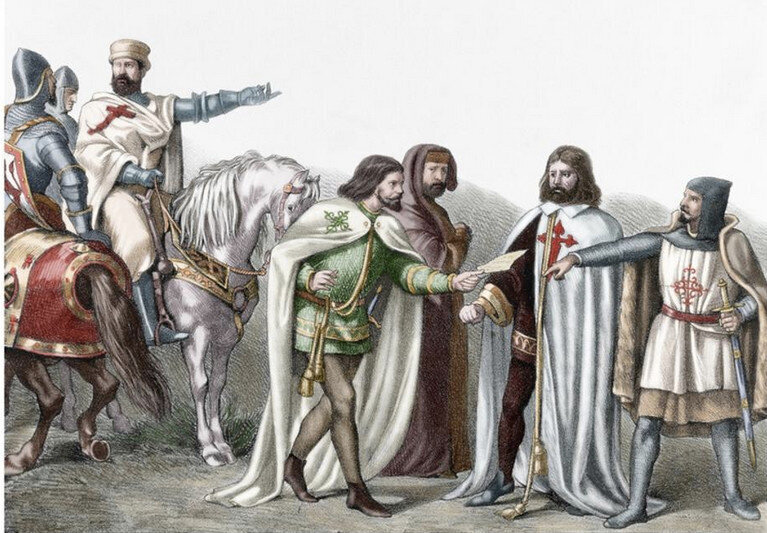
Order of Santiago
While the order of the Templars was suppressed in other parts of Europe, they survived in the Iberian Peninsula, as the Order of Santiago, the Order of Calatrava, the Order of Montesa and the Order of Christ, whose leaders intermarried with defenders of the Cathars and the House of Lusignan, who transferred the proprieties of the Templars to their own Knights Hospitallers, who later became the Knights of Malta. In turn, their descendants would produce the Order of the Garter and the Order of the Golden Fleece.
-

The Order of the Garter
Although he was responsible for the arrest of the Templars in 1312, Philip IV of France was the grandfather of Edward III of England, who founded the neo-Templar Order of the Garter. The family networks connected to the kings of Hungary, who were descended from Khazars, and founded the Order of Saint George and the Order of the Dragon, and would play a central role in the Wars of the Roses, with roses being a symbol, according to the Zohar, the most important book of Medieval Kabbalah, representing the Jewish people.
-

House of Luxembourg
The House of Luxembourg, the House of Anjou and their descendants the House of Plantagenet (kings of England) and the French House of Lusignan are said in folk tales and medieval literature to be descended from Melusine, a figure of European folklore, usually depicted as a woman who is a serpent or fish from the waist down, much like a mermaid. Through intermarriage with the House of Valois, they produced the line responsible for the preservation of the Melusine legend, like Jean of Berry, Marie of Valois and Philip the Bold, grandfather of Philip the Good, founder of the Order of the Golden Fleece.
-

House of Habsburg
The House of Habsburg is one of the most important dynastic families in European history. Through the marriage of Maximilian I of Habsburg (1459 – 1519), to Mary of Burgundy, granddaughter of the founder of the order, the Habsburgs took over control of the Order of the Golden Fleece, the most prestigious and historic order of chivalry in the world. As of early 2021, the head of the family is Karl von Habsburg, son of Otto von Habsburg, godfather of synarchist European Union, and co-founder of Le Cercle, the umbrella organization of the Fascist International.
-

House of Medici
A family so infamous they don’t need an introduction. They were the chief sponsors of the pagan revival of the Renaissance, through their sponsorship of the Hermetic agenda of Marsilio Ficino, reflected in the works of astrological magic like Boticelli’s Birth of Venus, or Michelangelo’s Sistine Chapel, and of Leonard da Vinci, purported Grand Master of the Priory of Sion. Catherine de Medici, who married Henry II of France, was a sponsor of Nostradamus, and practitioner of Black Mass. Marie de Medici married Henry IV of France, and was the grandmother of Louis XIV the Sun King, and Philip I, Duke of Orleans who married the daughter of Charles I of England, and became the ancestor of the founders of Freemasonry and the Illuminati.
-

Kingdom of Naples
Following the rebellion in 1282, Charles I of Anjou was forced to leave the island of Sicily by Peter III of Aragon's troops. Charles, however, maintained his possessions on the mainland, customarily known as the “Kingdom of Naples,” after its capital city. Charles and his Angevin successors maintained a claim to Sicily, warring against the Aragonese until 1373, when Queen Joan I of Naples formally renounced the claim by the Treaty of Villeneuve. Joan’s reign was contested by Louis the Great, the Angevin King of Hungary, who captured the kingdom several times (1348–1352). Louis was the son of Charles I of Hungary, founder of the Order of Saint George.
-
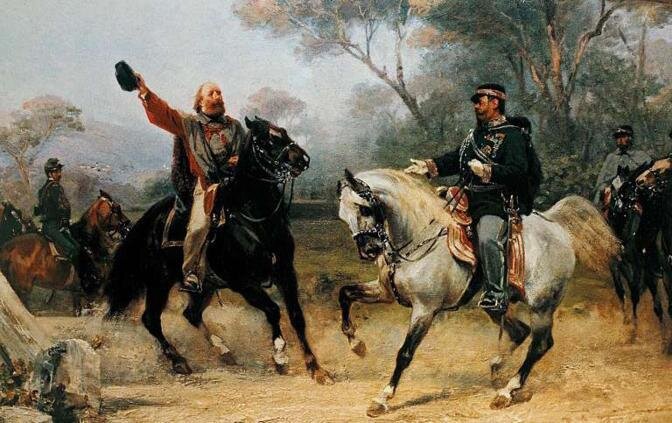
House of Savoy
The House of Savoy were hereditary claimants of the Kingdom of Jerusalem, and through their intermarried with the house of Este, Gonzaga and Sforza, they produce the line of Grand Masters associated with the Priory of Sion. The ascent of the dynasty began with Charles Emmanuel I of Savoy, whose birth was prophesied by Nostradamus. Their descendants would then become involved in the conspiracy of the Palladian Rite of Mazzini, Otto von Habsburg and Albert Pike, for the creation of a united Germany and united Kingdom of Italy under Victor Emmanuel II of Savoy.
-

House of Este
The House of Este was an Italian princely family, linked with several contemporary royal dynasties, including the House of Habsburg and the British royal family. Through intermarriage with the Houses of Sforza, Gonzaga and Savoy, the produced the circle of supporters of Leonardo da Vinci, and the purported Grand Masters of the Priory of Sion.
-
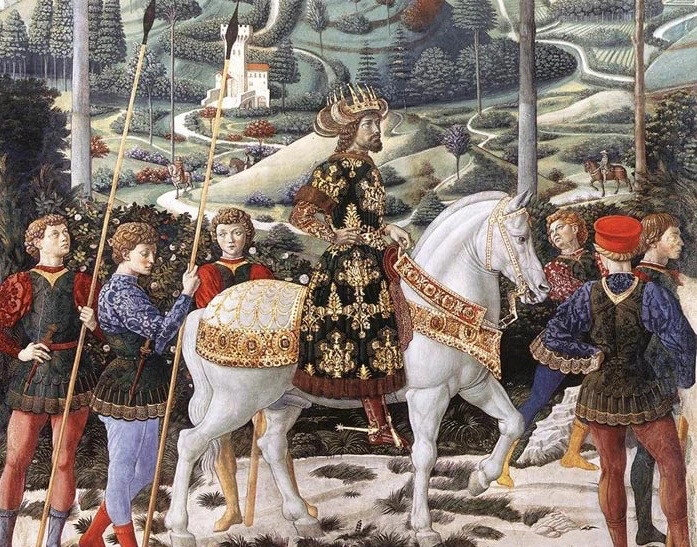
Marquises and Dukes of Montferrat
Another important family of crusaders, and hereditary claimants of the Kingdom of Jerusalem, they were connected by marriage to the Paleologos dynasty of the Byzantine Empire who introduced the heraldic symbol of the double-headed eagle, later adopted by the Habsburgs. They were also part of the important network of dynastic alliances with the house of Savoy, Este and Gonzaga who produced the early Grand Masters of the Priory of Sion.
-

House of Sforza
Sforza was a ruling family of Renaissance Italy, based in Milan, who acquired the Duchy of Milan following the extinction of the Visconti family in the mid-fifteenth century. The house was founded by Francesco I Sforza (1401 – 8 March 1466), who along with Cosimo de Medici the elder was a member of the Order of the Crescent, founded by René of Anjou, a purported Grand Master of the Priory of Sion. Francesco I ruled Milan, married Bianca Maria, the daughter of the last Duke of Milan, Filippo Maria Visconti (1392 – 1447), who together commissioned the Visconti-Sforza tarot decks, the oldest surviving tarot cards, later adapted and popularized by the Golden Dawn.
-

House of Visconti
The Visconti of Milan are a noble Italian family, who intermarried with the houses of Savoy, Sforza, Medici and Monteferrat to produce the lineage of the purported Grand Masters of the Priory of Sion. The biscione (“grass snake”), also less commonly known as the vipera (“viper”), is a heraldic charge associated with the Visconti family, showing on argent an azure serpent in the act of consuming a human, usually a child and sometimes described as a Moor or an Ottoman Turk. It became the historic symbol of the city of Milan. Motto of the House of Visconti is Vipereos mores non violabo, Latin for “I will not violate the customs of the serpent.”
-

House of Gonzaga
The House of Gonzaga is an Italian princely family that ruled Mantua, in northern Italy, from 1328 to 1708. Through intermarriage with the houses of Este and Sforza, and produced several purported Grand Masters of the Priory of Sion, including Charles III, Duke of Bourbon, Ferrante I Gonzaga (1507 – 1557), who was also Grand Master of the Order of the Fleur de Lys, founded by René of Anjou. Federico II’s descendant Leopold, Duke of Lorraine, married Élisabeth Charlotte d'Orléans, the daughter of Philip I, Duke of Orleans. Their son was Francis I, Holy Roman Emperor, Grand Master of the Order of the Golden Fleece, and husband of Empress Maria Theresa, who supported the cause of the Jewish heretic Jacob Frank.
-

Order of the Dragon
The Order of the Old Nobility, also called Order of the Four Emperors or Ancient Order of Saint George, was founded by the German king Henry VII, the first from the House of Luxembourg, upon his election in 1308. A hundred years later, his descendant Sigismund, then King of Hungary, established the Catholic Order of the Dragon. In the aftermath of his defeat against the invading Ottoman forces, he aimed at strengthening Christian and knightly virtues and appealed to Saint George for his protection. Through her marriage to Ferdinand I, Holy Roman Emperor, Anna Jagellonica became ancestress of the leading families involved in the Protestant and Rosicrucian movements and the founding of the Grand Masters of the Teutonic Knights involved in the founding of the Duchy of Prussia.
-
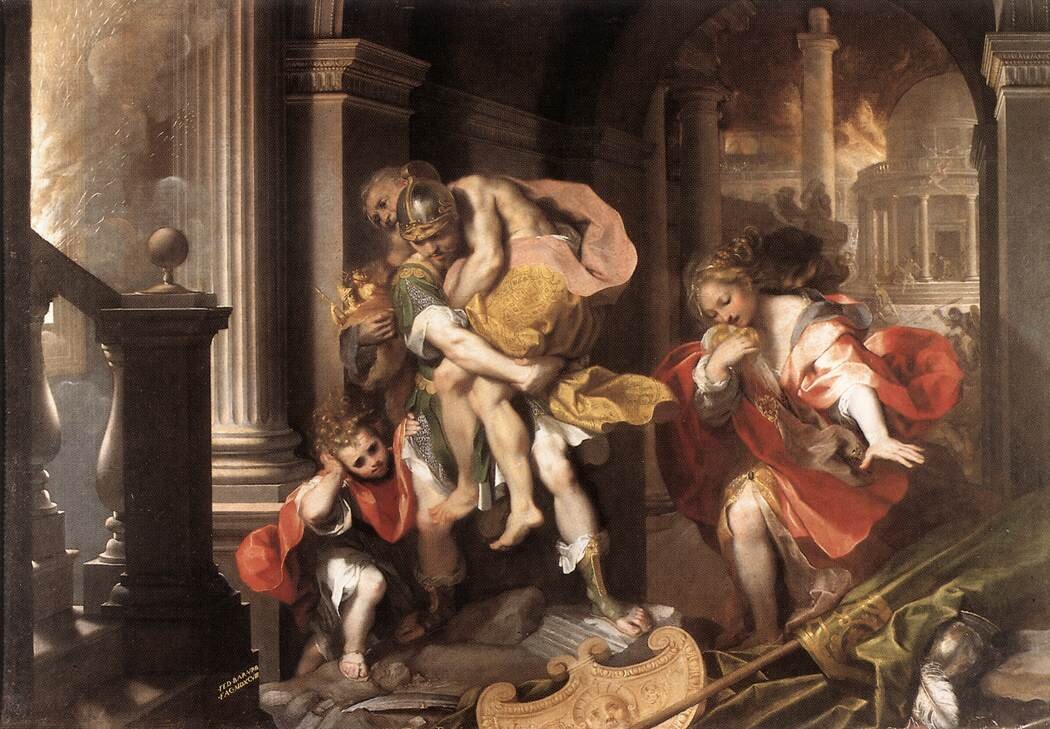
Dukes of Saxony
The early Dukes of Saxony were members of the House of Billung, who trace their descent to Liudolf (c. 805/820 – 866), who married Oda Billung, great-granddaughter of Guillaume of Gellone, purported son of Rabbi Makhir, of the royal line of David, and a member of the Kalonymos family of northern Italy, that had immigrated to Germany in the 10th century, where they became leaders of the community of the Ashkenazi Hasidim movement, who were central to the development of the Kabbalah. According to Jewish legend, after the fall of Jerusalem in 70 AD, the Romans transported large numbers of the Jews to distant regions of the Roman Empire, many of them being sent as slaves to a German region on the Upper Rhine, which was known as Ascania, named after Ascanius, a survivor of the Trojan War, who was equated with Ashkenaz of Genesis, whose father Gomer was an ally of Gog, the chief of the land of Magog.
-
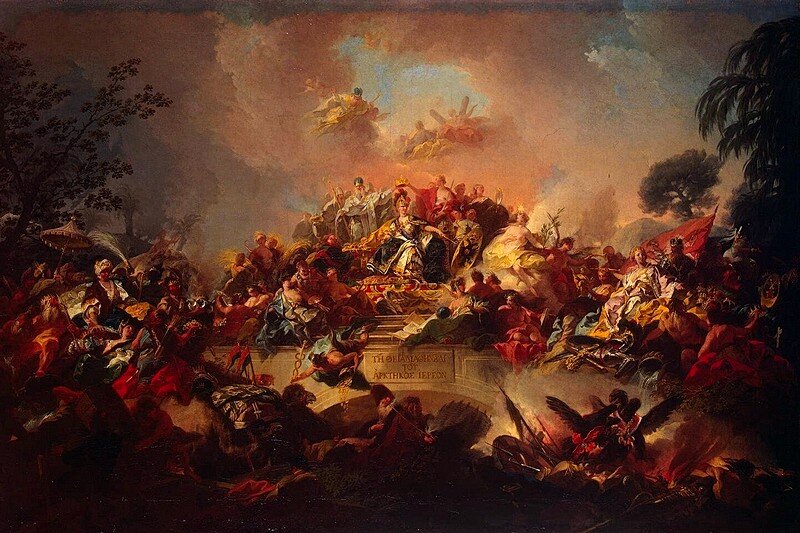
House of Anhalt
Also known as the House of Ascania, the House of Anhalt is a dynasty of German rulers, which refers to its longest-held possession, Anhalt. They were the founders of the Fruitbearing Society, and Christian of Anhalt was the chief sponsor of political agenda of the Rosicrucian movement around Frederick V of the Palatinate. The Ascanian dynasties in the two Saxon states became extinct in 1689 and in 1422, respectively, but Ascanians continued to rule in the smaller state of Anhalt and its various subdivisions until the monarchy was abolished in 1918. Catherine the Great, Empress of Russia, was a member of the House of Ascania, herself the daughter of Christian August, Prince of Anhalt-Zerbst.
-

Alchemical Wedding
The Rosicrucian manifestos appeared around the same time that the German prince Frederick V of the Palatinate (1574 – 1610) began to be seen as the ideal incumbent to take the place of leader of the Protestant resistance against the Catholic Hapsburgs, to be achieved through his dynastic union with King James I’s daughter, Elizabeth Stuart. The perceived occult importance of their marriage was enshrined in a Rosicrucian tract called The Chymical Wedding of Christian Rosenkreutz, published in 1616, which contains allusions to the Order of the Golden Fleece. The word “chymical” is an old form of “chemical’ and refers to alchemy, for which the “Sacred Marriage” was the goal.
-

Kingdom of Prussia
At Wittenberg in 1522, and at Nuremberg in 1524, Martin Luther encouraged Grand Master of the Teutonic Order Duke Frederick of Saxony (1473 – 1510), to convert the order's territory into a secular principality under his personal rule. As its suzerain, Sigismund I the Old, a descendant of Sigimund of Luxembourg, founder of the Order of the Dragon, granted the territory as a hereditary fief of Poland to Duke Albert per the Treaty of Kraków, a decision that was sealed by the Prussian Homage in Kraków in April 1525.The Duchy of Prussia was elevated to a kingdom in 1701, under their son, Frederick I of Prussia (1657 – 1713), the paternal grandfather of Frederick the Great.
-

Landgraves of Hesse
The Landgraviate of Hesse was a principality of the Holy Roman Empire. It existed as a single entity from 1264 to 1567, when it was divided among the sons of Philip I, Landgrave of Hesse, a direct descent of Elizabeth of Hungary of the Miracle of the Roses, and whose descendants would found the Rosicrucian movement. Philip I married Christine of Saxony, the great-granddaughter of Emperor Sigismund, founder of the Order of the Dragon.
-
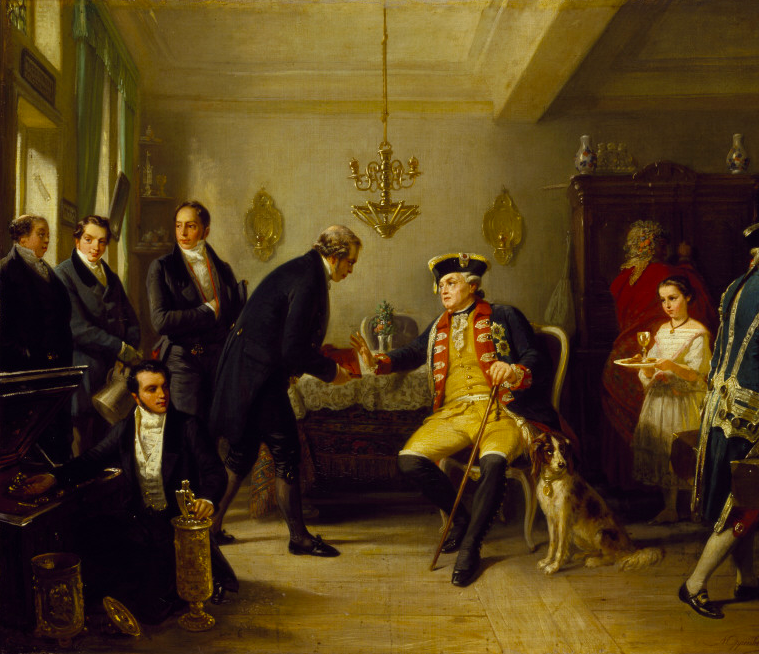
House of Hesse-Kassel
The origins of the House of Hesse begin with the marriage of Sophie of Thuringia—daughter of Louis IV, Landgrave of Thuringia, and Elizabeth of Hungary, of the Miracle of the Roses. Amschel Mayer Bauer, the founder of the Rothschild dynasty, largely achieved his wealth through his association with the ruling family of Hesse-Kassel, direct descendants of Maurice, Landgrave of Hesse-Kassel, known as “the Learned,” was a close friend of the grandson of William the Silent, Frederick V of the Palatinate (1596 – 1632), whose marriage to Elizabeth Stuart, daughter of King James, was celebrated in the Chymical Wedding of Christian Rosenkreutz. Prince Charles of Hesse-Kassel (1744 – 1836), was a leading member of the Strict Observance, the Bavarian Illuminati and Grand Master of the neo-Rosicrucian order, the Asiatic Brethren, founded by a cousin of Jacob Frank, successor of Sabbatai Zevi.
-

Illuminati
A look at the genealogies of the leading participants of the Illuminati shows that they can be traced back to aristocratic families who dominated the history of the occult for centuries, especially through their involvement with Protestantism and Rosicrucianism. A direct line can be traced back to to Philip Landgrave of Hesse (1504 – 1567), who was descended from Elizabeth of Hungary (1207 – 1231), of the Miracle of the Roses. Elizabeth’s father-in-law was Hermann I, Landgrave of Thuringia (d. 1217), a great patron of the arts, who sponsored the famous Grail author Wolfram von Eschenbach (c. 1160/80 – c. 1220), whose Parzival featured the story of the Knight Swan. The Knight Swan was also the purported ancestor of the House of Oldenburg, who also feature prominently in this lineage, as the royal family of Denmark, who intermarried for centuries with the House of Hesse-Kassel.
-
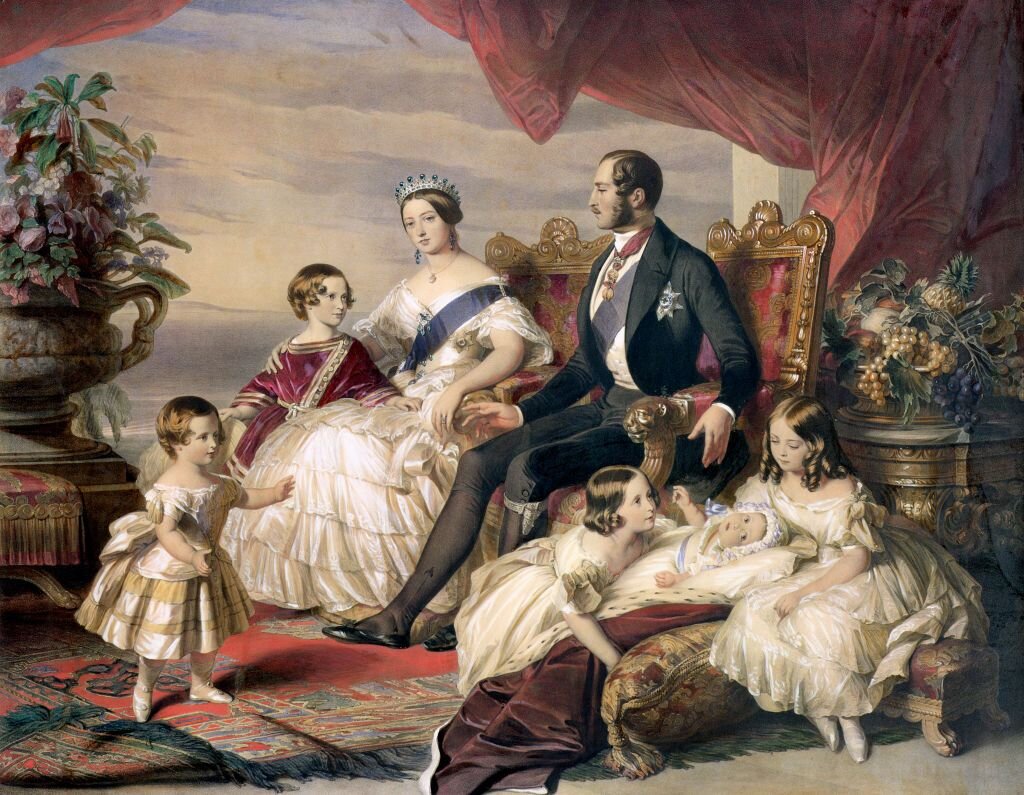
House of Saxe-Coburg and Gotha
Queen Victoria’s husband, Prince Albert, was descended from Ernest I, Duke of Saxe-Gotha (1601–1675). The House of Saxe-Coburg and Gotha was founded by Ernest I’s descendant, Ernst I (1784 – 1844). Ernest I’s younger brother Leopold I (1790 – 1865) became King of the Belgians in 1831, and his descendants continue to serve as Belgian monarchs. Leopold I was a knight of the Order of the Golden Fleece, as was his son and successor, Leopold II, who infamous for his extensive atrocities as the owner Congo Free Sate. Ernest I married Louise, Duchess of Saxe-Coburg-Gotha, the daughter of Ernest II, Duke of Saxe-Gotha-Alternberg (1745 – 1804), the first cousin of King George III of England. In 1787, following the disbanding of the Illuminati, Ernst II granted asylum in Gotha to a fugitive founder Adam Weishaupt.
-

House of Romanov
The Romanovs were the reigning royal house of Russia from 1613 to 1917, who became intimately interrelated with the British Royal family, through the children of Queen Victoria and Prince Albert of Saxe-Coburg and Gotha. Before their rise to power the Romanovs were accused by their enemies of practising magic and possessing occult powers. The Romanov family came to power in the seventeenth century and ruled the country for three hundred years until they were deposed in the Bolshevik Revolution of 1917. Mikhail Romanov (1596 – 1645), the first Tsar of the Romanov dynasty, allegedly ascended the throne with the help of the British Secret Service and John Dee’s son Arthur (1579 – 1651). Arthur had accompanied his father in travels through Germany, Poland, and Bohemia. In 1586, Tsar Boris Godunov (c. 1551 – 1605), whose career began at the court of Ivan the Terrible, had offered Arthur’s father John Dee, who was mathematical advisor to the Muscovy Company, to enter his service, an offer which Dee declined.
-

Order of the Fleur de Lys
The key to identifying the historical significance of the various early purported Grand Masters of the Priory of Sion is the Oder of the Fleur de Lys, founded in 1439 by Rene of Anjou as a continuation of the Templars. The avowed purpose of the Order was the re-establishment of the Judaic-Christian Kingdom of Jerusalem and, until the 1995 change to the constitution, this was still stated as the prime purpose of the Order. The Sovereign of the Order was in theory the Reigning King of Jerusalem of the Anjou dynasty. With the establishment of the State of Israel however, the order chose to amend this and merely put this in a preamble to the new constitution as the reason for the Order’s founding. The Order was given its first Document in 1439 by Rene d’Anjou, who was at that time King of Jerusalem, Naples and Hungary, Duc d’Anjou, de Bar et Lorraine, and a purported Grand Master of the Priory of Sion.
-
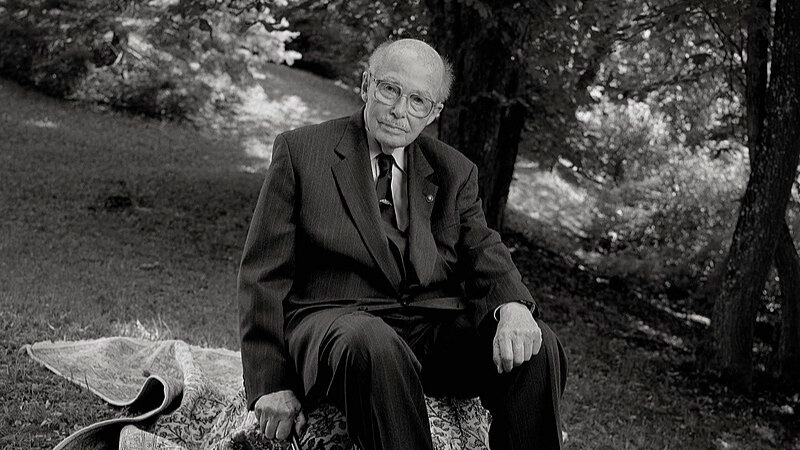
Priory of Sion
Although stated as fact in Dan Brown’s Da Vinci Code, the Priory of Sion is a mythical organization invented by Pierre Plantard and his associates, in his in his failed attempt to create a prestigious neo-chivalric order. The theme was largely plagiarized by Brown from the 1982 sensationalistic The Holy Blood, Holy Grail, of Baigent, Leigh and Lincoln. Based on clues they found deposited in various libraries, including the infamous Dossier Secrets, the authors constructed an outlandish hypothesis that the Priory of Sion were protectors the sang real (“royal blood”), not the san greal (“Holy Grail”), a sacred bloodline of the descendants of Jesus who purportedly would have wed Mary Madgalene, who then fled to southern France following the Crucifixion. Although clearly fanciful, Lynn Picknett and Clive Prince, in The Sion Revelation, revealed that the Priory of Sion was a front organization for clandestine synarchist and Martinist secret societies plotting to create Saint-Yves d’Alveydre’s “United States of Europe.” This “Empire of the End Times,” was to be ruled by the Grand Monarch prophesied by Nostradamus and fulfill the Three Secrets of Fatima. According to some accounts, Nostradamus’ grandfather was Jean de Saint-Remy, a Jewish Kabbalist at the court of René of Anjou, a purported Grand Master of the Priory of Sion.
-

The House of Rothschild
The Rothschilds have been referred to as a “founding father of international finance,” and ranked seventh on the Forbes magazine list of “The Twenty Most Influential Businessmen of All Time” in 2005. According to Rabbi Antelman in To Eliminate the Opiate, the Rothschilds were the true founders of the Bavarian Illuminati.